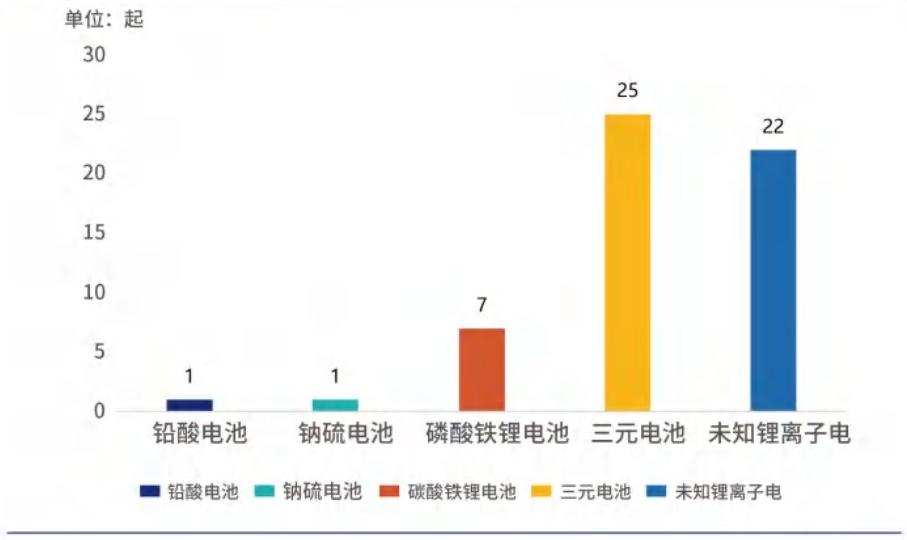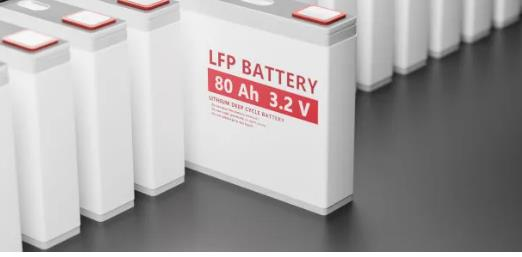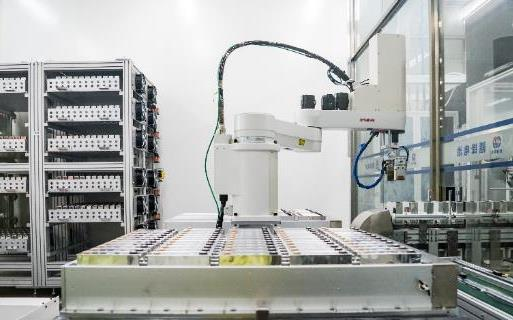According to publicly available data, there have been over 60 energy storage safety incidents worldwide in the past five years (2017-2022), with 17 fires occurring in the first half of 2022 alone.
From the incidents that have occurred, the direct causes of safety incidents in energy storage stations can be broadly categorized into four factors: battery-related factors, external stimulus factors, operating environment factors, and management system factors [1]. Battery-related factors refer to manufacturing defects and aging of the batteries themselves, which can impact the safety of energy storage systems. External stimulus factors include battery misuse (overcharging/discharging, external short circuits), mechanical abuse (compression, puncturing), and thermal abuse (overheating) that can lead to thermal runaway in batteries. Operating environment factors refer to the operation and monitoring of thermal management systems and other management systems to prevent battery fires. Management system factors relate to operational maintenance and software flaws in battery management systems. Out of the more than 60 energy storage incidents that have occurred, aside from issues such as improper corporate management and transportation-related oversights, 55 incidents were fires caused by energy storage batteries. Lithium-ion batteries accounted for approximately 80% of these incidents, making them the leading cause of energy storage accidents. Within lithium-ion battery-related incidents, ternary batteries accounted for 25 cases, while incidents related to lead-acid batteries and sodium-sulfur batteries were minimal, with only one case each.
Figure 1: Safety Incidents Caused by Energy Storage Batteries
Data source: EESA Database
[1] Cao, W., Lei, B., Shi, Y., et al. "Analysis and Reflection on Safety Incidents of Lithium-ion Battery Energy Storage Stations in South Korea."
2023 Chinese New Energy Storage Industry Development White Paper: Opportunities and Challenges
In terms of battery characteristics, the primary batteries used in energy storage stations are lithium-ion batteries and lead-acid batteries. Compared to lead-acid batteries, lithium iron phosphate (LiFePO4) batteries offer higher energy density, better thermal stability, and a lifespan that is approximately five times longer. However, ternary lithium-ion batteries have the highest energy density but poorer thermal stability, making them the leading cause of safety incidents. On June 29, 2022, the Comprehensive Department of the National Energy Administration released the "Twenty-Five Key Requirements to Prevent Power Production Accidents (2022 Edition) (Draft for Soliciting Opinions)," which explicitly states that "medium and large-scale chemical energy storage power stations should not use ternary lithium-ion batteries or sodium-sulfur batteries, and it is not advisable to use used power batteries." In summary, due to its relatively stable performance, LiFePO4 batteries remain a preferable choice for energy storage applications.
Addressing the safety concerns of battery energy storage systems requires stringent monitoring at every stage of battery thermal runaway. Apart from internal factors such as battery aging and defects, the process of battery thermal runaway involves mechanical and electrical abuse of individual cells, leading to self-heating, which further results in overheating (thermal abuse). This eventually causes individual cells to experience thermal runaway, releasing flammable gases and smoke, igniting the battery, and triggering a chain reaction that can lead to fires or even explosions in energy storage stations. Throughout the early stages of this process, comprehensive, multi-tiered system-level detection is essential. Additionally, the resistance to interference, accuracy, and timeliness of the Battery Management System (BMS) are critical aspects that need to be addressed.
Currently, China's energy storage industry is rapidly growing, but the associated technology and standard systems are not yet fully developed. This is a fundamental reason for safety issues in energy storage stations. In the future, expediting the improvement of technical standards related to energy storage systems and ensuring the healthy and sustainable development of the energy storage industry will be a top priority.
The Safety of LiFePO4 Batteries in Green Power Products
In the realm of energy storage, safety is of paramount importance. Ensuring the safety of energy storage systems, such as those used in energy storage stations, is critical to prevent accidents and protect people and property. Green Power recognizes the significance of safety and places it at the forefront of our product development and deployment. Our commitment to safety is exemplified by our choice of LiFePO4 batteries, known for their exceptional safety performance and reliability.
The Superior Safety of LiFePO4 Batteries
LiFePO4 batteries, or lithium iron phosphate batteries, have gained recognition in the energy storage industry for their superior safety features. These batteries have a robust chemical structure that is highly resistant to thermal runaway, making them significantly safer than other lithium-ion battery chemistries.
Thermal Stability: LiFePO4 batteries are known for their excellent thermal stability. They can withstand high temperatures without the risk of thermal runaway, which is a critical factor in preventing battery fires. Even under extreme conditions, LiFePO4 batteries are less prone to overheating and are far more reliable in maintaining their structural integrity.
Non-Flammable Electrolyte: LiFePO4 batteries use a non-flammable electrolyte, reducing the risk of fire or explosion in case of a battery malfunction. This inherent safety feature makes them a preferred choice in applications where safety is a top concern.
High Cycle Life: LiFePO4 batteries have a longer cycle life compared to other lithium-ion chemistries. This longevity reduces the frequency of battery replacement and minimizes the risk associated with handling and disposing of used batteries.
Resistant to Overcharging and Overdischarging: LiFePO4 batteries are more tolerant of overcharging and overdischarging, further enhancing their safety profile. They are less likely to experience voltage spikes or extreme discharge conditions that can lead to thermal instability.
Lower Risk of Thermal Runaway: Due to their chemical composition and stable crystal structure, LiFePO4 batteries have a significantly lower risk of thermal runaway, which is a key contributor to battery-related fires in energy storage systems.
Green Power's Choice of LiFePO4 Batteries
At Green Power, we prioritize safety in all our energy storage products. We believe that safety is non-negotiable when it comes to providing reliable and sustainable energy solutions. That's why we exclusively use automotive-grade A-rated LiFePO4 battery cells in our energy storage systems.
Automotive-Grade A-Rated LiFePO4 Cells
Automotive-grade A-rated LiFePO4 cells are the highest quality LiFePO4 batteries available. These cells undergo rigorous testing and quality control measures to ensure their safety and reliability. Here's why these cells are the right choice for Green Power products:
Stringent Testing: Automotive-grade LiFePO4 cells are subjected to extensive testing, including thermal stability tests, overcharge and overdischarge tests, and vibration tests. These tests help identify any potential safety issues and ensure that the cells meet the highest safety standards.
Reliable Performance: A-rated LiFePO4 cells are known for their consistent and reliable performance over their lifespan. They maintain their capacity and safety features even after years of use, making them ideal for long-term energy storage applications.
Enhanced Safety Features: These cells incorporate additional safety features such as built-in thermal protection, overcurrent protection, and overvoltage protection. These safeguards help prevent overheating and other potential safety hazards.
Long Lifespan: Automotive-grade LiFePO4 cells have a longer lifespan compared to standard LiFePO4 cells. This means that Green Power energy storage systems equipped with these cells offer greater durability and reliability.
Certified Quality: A-rated LiFePO4 cells often come with industry certifications and compliance with international safety standards, providing peace of mind to users and installers.
Conclusion
In the rapidly evolving field of energy storage, safety remains a paramount concern. Green Power is dedicated to providing energy storage solutions that not only meet your energy needs but also prioritize safety and reliability. Our choice of automotive-grade A-rated LiFePO4 battery cells reflects our commitment to delivering the highest quality and safest energy storage products on the market.
With LiFePO4 batteries in our energy storage systems, you can trust Green Power to provide you with a secure and sustainable energy solution that aligns with the highest safety standards. We are committed to the continuous improvement of our products and technology to ensure the safety and satisfaction of our customers. For any inquiries or assistance regarding energy storage solutions, please feel free to contact Green Power's experts. We are here to support your journey towards a greener and safer energy future.
If you're interested in learning more about our solar energy storage offerings, we encourage you to explore our product line. We offer a range of panels and battery that are designed for various applications and budgets, so you're sure to find the right solution for your needs.
Website:www.fgreenpv.com
Email:Info@fgreenpv.com
WhatsApp:+86 17311228539
Post time: Sep-07-2023














